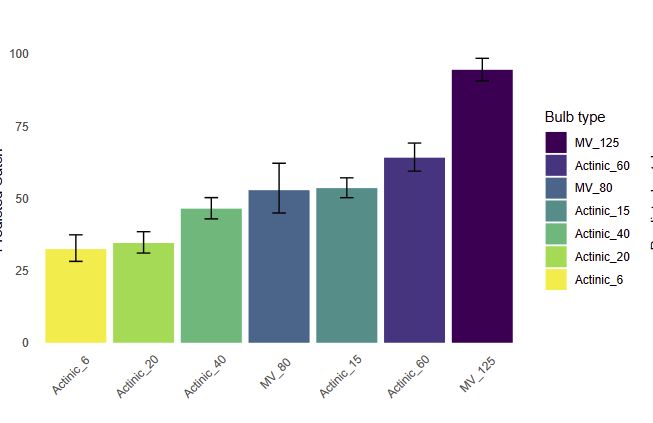Heath, J., 1965. A genuinely portable M.V. Light Trap. Ent. Rec., 77: 236-238. www.biodiversitylibrary.org/page/39266893


Heath, J., 1965. A genuinely portable M.V. Light Trap. Ent. Rec., 77: 236-238. www.biodiversitylibrary.org/page/39266893





Building on work which has suggested that moths may evolve smaller wings in response to light pollution, we find that traps placed in gardens near street lighting tend to collect fewer large-winged species.

Building on work which has suggested that moths may evolve smaller wings in response to light pollution, we find that traps placed in gardens near street lighting tend to collect fewer large-winged species.
The take away is that MV traps produce very different samples to Actinic ones. And brighter Actinic traps tended to collect more large species than dimmer ones.

The take away is that MV traps produce very different samples to Actinic ones. And brighter Actinic traps tended to collect more large species than dimmer ones.
As one would expect, 125W Mercury Vapor bulbs collected the largest samples. But much less powerful 15W Actinic traps performed surprisingly well.

As one would expect, 125W Mercury Vapor bulbs collected the largest samples. But much less powerful 15W Actinic traps performed surprisingly well.
Ever wondered why different bulbs collect different species?
Or why some species are particularly threatened by light pollution?
Using 100,000+ samples from the GMS (@gardenmothscheme.bsky.social), our new pre-print addresses these questions and more (thread)

Ever wondered why different bulbs collect different species?
Or why some species are particularly threatened by light pollution?
Using 100,000+ samples from the GMS (@gardenmothscheme.bsky.social), our new pre-print addresses these questions and more (thread)


